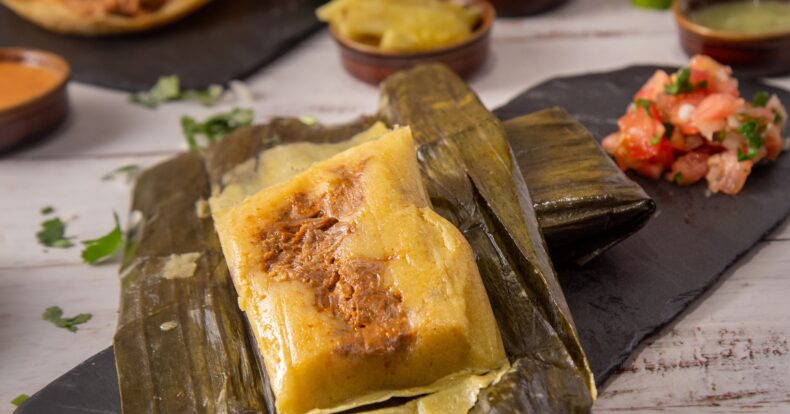Tico Tamale

December is here and everyone who lives in Costa Rica knows what that means: the month of tamales. So this article is going to be entirely dedicated to this culinary preparation that has always been a beloved tradition for all Ticos.
The origin of the tamale
Tamale is originally from Mexico and the northern regions of Central America and thanks to cultural and commercial exchange it spread throughout the continent. In turn, the word tamal comes from the Nahuatl word tamalli, which means “wrapped”. In spite of globalization and therefore, the dietary changes of the American population and the reduced use of corn, the tradition of tamales has survived and continues to be a very important recipe in the continent.
This is because corn is a grain that built the basis of the diet of pre-Hispanic peoples in Mesoamerica, accompanied by beans, ayotes and other foods available in the territory. Its name also has Nahuatl origin, tlallotli which means “heart of the earth”; and there is also the origin of the Taino voice mahis which means “that which sustains life”.
Tamale was then a very present food in the daily and ceremonial life of these Mesoamerican peoples and had several forms of preparation and uses, according to hierarchy or festive activity. Tamales without filling were consumed by the people while those with filling (poultry meat, amphibians, fish, shrimp, dog, snails, seeds, herbs, chilies, etc.) were enjoyed by people of higher social status or were used as offerings in religious ceremonies.
Later, during the conquest and colonial period, tamale lost its symbolic and ritual value due to the cultural clash that occurred. However, its link to family and community celebrations.
A tradition in Costa Rica
In Costa Rica, there has been archaeological evidence of corn for more than 5600 years. Its cultivation had a great impact on the economic and social development of the population at that time. However, in the 1980s, an economic crisis occurred and brought with it changes in the development model, such as free trade agreements and increased grain imports. This directly affected small farmers, who reduced local production and consumption of corn.
The word “tamal” in Costa Rica refers to the product prepared with dough, mainly corn, and wrapped in leaves. But it is also used to name other preparations such as sweet corn-based cakes or other floury baked products, for example, tamal de elote or tamal asado de maíz.
A characteristic of the tamale in Costa Rica is that it is present in the daily diet, in family and community events. In fact, the moment of preparation of tamales is called “tamaleada”; this term gathers the concept of group meeting where recipes and tamales are shared among families and friends.
This dish is then a living sample of the heritage and family reunion in Costa Rican circles, besides being associated with the Christmas holidays. This shows the connection between cooking and human beings and their emotions, their conviviality.
Author: Mónica Gallardo for Sensorial Sunsets
Navigate articles




